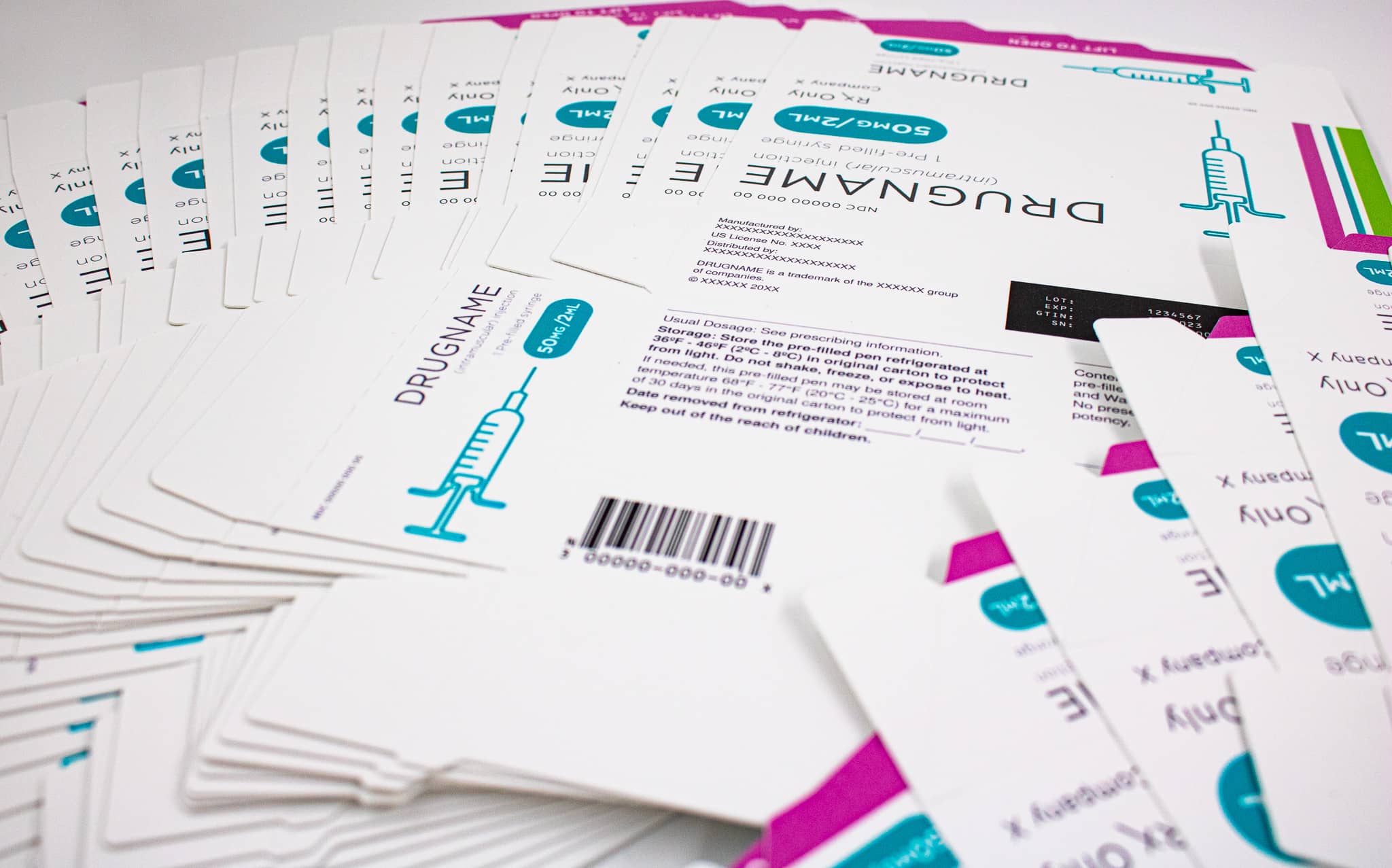Pixels Over Plates: Digital Printing for the Pharma & Biotech Industries
Over the years, digital printing has come a long way—especially when it comes to its use in the pharmaceutical and biotechnology packaging world. In these industries, digital printing is used primarily for short-runs, and it’s helped to open doors when it comes to the speed at which production representative samples can be produced. In this article, we’ll talk more about digital printing, why it’s a good option for production representative samples, and how to use it to help create a smooth go-to market experience for you and your team.
What is digital printing?
Simply put, think of your home inkjet printer. You can take a file from your computer and print what is on your screen instantly—all that is required is ink and media. Your home printer is likely limited to 8 ½ x 11 or A4 sheets of paper, but commercial in-house digital printers are large enough and versatile enough that they can print everything from signs as big as billboards to small cartons and blister packs. The speed and efficiency at which they print is also significantly better than your home printer.
Why use digital printing?
Speed and flexibility. One of the best reasons to utilize digital printing is the speed at which you can complete a print job. We can take a file, print, cut, assemble, and ship out to a customer all within a couple of hours. Digital printing also allows for flexibility with materials—sheet-fed, roll-fed, rigid, and flexible. You can print multiple jobs on multiple substrates, up to two inches thick and 96 inches wide on the same printer, within minutes. Where a commercial printing press is extremely resource intensive. Just setting up the press can take hours and sometimes days depending on the complexity of the job. Commercial printing presses lean on a variety of departments, requires press operators, creation of plates, maintenance, etc. Digital allows for a smaller team and no extra resource intensive departments.
When is digital printing used?
In my opinion, there is really no comparison between digital printers and commercial printing presses. They’re used for different purposes. Digital printers, right now, are only in the realm of short-run production when it comes to their use in the pharma and biotech industries. Their limitations are different. Digital printing is limited by color and throughput speed, where commercial printing is limited by the resources required and media it can accommodate.
Large digital presses have been getting significantly better and are beginning to rival traditional analog presses in quality and speed. However, are similar to analog presses in the capital, space, and resources they require. They’re also limited by the types of media on which they can print.
How can clients benefit from digital printing?
We encourage clients to consider digital printing for short-runs and production representative samples—especially when going through testing like human-factor studies and focus group panels. These types of jobs often require 25-500 samples on multiple types of media and with various packaging formats, which make them the perfect scenario for digital printing.
Digital printing gives a client an (almost) instant representation of what they will get when they scale to full production volumes. With digital printing, you can get 90% of the way there in the matter of a day. We call these production representative samples because if put in a store, next to a commercial printed version, the average person would not know.
The flexibility of digital printing also allows for client feedback to be more quickly incorporated and for clients to see the changes in real time. It also allows clients to see their artwork on a variety of cartons. This, in my opinion, is the real beauty of digital printing.
